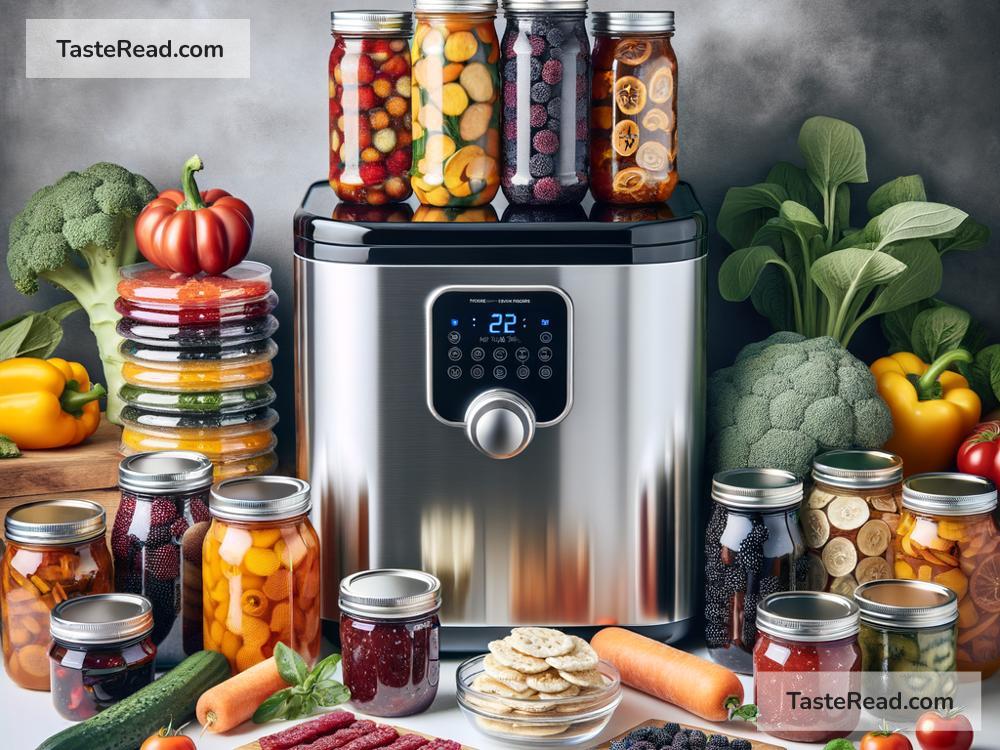Innovations in Food Preservation Techniques: Keeping Food Fresh and Safe
Food preservation is something humans have been working on for thousands of years. From ancient drying methods to pickling and smoking, people have always looked for ways to keep food edible for longer periods. Thanks to science and technology, we are now using advanced methods to preserve food. These innovations not only help reduce food waste but also ensure that food stays safe and fresh for longer periods.
In this blog, we’ll explore some of the latest innovations in food preservation techniques and explain why they are so important.
Why Do We Need Food Preservation?
Food preservation is essential for several reasons. First, it helps prevent the growth of harmful bacteria, fungi, and microorganisms that can spoil food and make us sick. Second, it allows fresh produce and other foods to last longer, reducing the need to throw food away. This is especially important in a world where millions of people go hungry every day. Lastly, preserved food can be transported over long distances, ensuring that everyone has access to a variety of food, no matter where they live.
As the global population grows and food supply chains become more complex, we need smarter ways to save food. Thankfully, researchers and scientists are coming up with exciting new techniques.
1. Vacuum Packing
Vacuum packing is not entirely new, but it remains one of the most effective modern methods for preserving food quality. In this technique, air is removed from a package before sealing it tightly. Since bacteria and mold thrive in oxygen-rich environments, vacuum packing slows down the spoilage process.
Today, vacuum packing has evolved to include better materials and sealing technologies. Businesses use vacuum-packed meats, cheeses, and vegetables for long storage times, while home kitchens use affordable vacuum sealers to preserve leftovers and fresh produce.
2. Freeze-Drying
Freeze-drying, also called lyophilization, is a brilliant innovation that combines freezing and drying to extend food shelf life. Fresh food is first frozen, and then water is removed from it using a special drying process. The result is lightweight, shelf-stable food that retains its taste, color, and nutrients.
Freeze-dried foods are popular for astronauts, hikers, and emergency kits because they are easy to transport and last for years. You might have tasted freeze-dried fruit in cereals or snacks. The process ensures that the food doesn’t have the extra weight or spoilage risks of fresh items. Plus, adding water makes freeze-dried food ready to eat in minutes!
3. High-Pressure Processing (HPP)
High-Pressure Processing is a fascinating newer method that uses extremely high pressure, instead of heat or chemicals, to kill bacteria and extend shelf life. HPP preserves food like juices, dips, and packaged meats while maintaining its fresh taste and texture.
This technique has gained popularity because it doesn’t use additives or harsh chemicals. It focuses on using purely physical force to make food safe without changing its original flavor. Consumers love HPP products because they are fresher and healthier compared to heavily processed alternatives.
4. Edible Coatings
Another exciting innovation in food preservation is edible coatings. Scientists have created thin, natural layers that can be applied to fruits, vegetables, and other foods to keep them fresh longer. These coatings act as a protective barrier, reducing moisture loss and slowing down spoilage.
For example, coatings made from natural substances like beeswax, plant-based oils, or even algae are used on apples, avocados, and cucumbers. Some edible coatings also contain antimicrobial ingredients to fight bacteria. The bonus? You can eat your food without worrying about peeling off any harmful plastic or chemicals.
5. Smart Packaging
Smart packaging is revolutionizing the way we store and monitor food. By using technology, smart packaging can give us real-time updates about the freshness of food. For instance, some advanced food packages change color or display alerts if the food inside starts to spoil.
Additionally, food companies are now embedding tiny sensors into packaging to track temperature, humidity, and other factors during transportation. This helps ensure that fresh food reaches customers in optimal condition. In the future, we may even see packages that suggest recipes to use up food before it goes bad!
6. Cold Plasma Technology
Cold plasma is an innovative solution that uses ionized air to kill bacteria and extend food’s shelf life without harming its texture or nutrients. This futuristic method is being studied for use in preserving fresh fruits, vegetables, and meats.
Cold plasma works at low temperatures, which makes it ideal for preserving delicate foods like berries or seafood. It is also environmentally friendly because it uses only electricity and air – no chemicals or plastics.
7. Genetic Technology for Longer Shelf Life
Scientists are now using genetic techniques to create fruits, vegetables, and crops that naturally last longer. For example, genetically modified tomatoes and avocados are being bred to ripen more slowly and resist spoilage.
While the idea of GMO (genetically modified organism) foods is still controversial for some people, these advancements could significantly reduce food waste. Imagine foods that stay fresh for weeks instead of days, all without needing special treatments or preservatives!
Conclusion
Innovations in food preservation are helping us tackle some of the biggest challenges in food waste, food safety, and transportation. From high-tech methods like cold plasma and smart packaging to sustainable solutions like edible coatings and freeze-drying, these techniques are reshaping the food industry.
As we learn more about combining science and nature, food preservation will continue to improve. These methods not only benefit consumers but also the environment by reducing waste and energy use. The future of food preservation is bright, fresh, and safe!
What do you think about these exciting innovations? Let us know in the comments!

